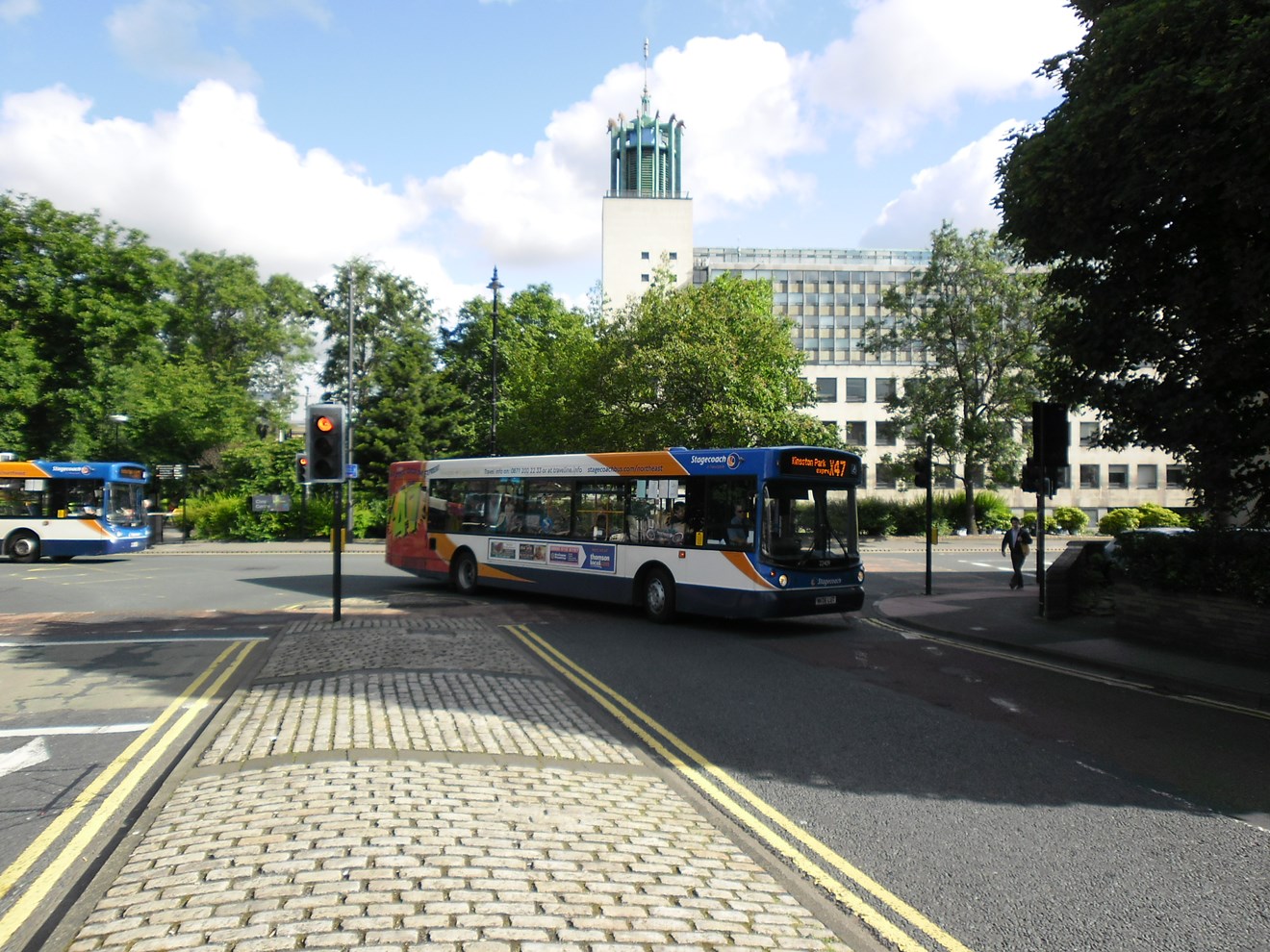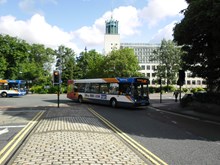Poole, 2012-Jul-23
Tyne and Wear Better Bus Area with Siemens traffic signal controllers
The project aims to improve the reliability of journey times along 19 bus corridors and relieve congestion at nine hotspots where buses are currently delayed on a regular basis. This will involve Siemens upgrading and connecting traffic controllers to our Remote Monitoring System (RMS) and providing the Tyne and Wear Urban Traffic Control Centre with Siemens Dial Up Strategic Control (DUSC) enabling the efficient monitoring and management of on-street traffic equipment along key bus corridors.
Peter Gray, Head of Highways and Traffic Signals Operations, said: ‘Strategic improvements of this kind support the work of the Integrated Transport Authority to achieve the area's aims to improve and promote the overall use of public transport and sustainable travel choices in Tyne and Wear. The delivery of these services is monitored against a number of indicators, these are reported throughout the year’.
The works will be undertaken in 2012/13 to provide an easy to use and highly reliable facility, enabling the efficient monitoring and management of on-street traffic equipment along key bus corridors across Tyne and Wear. The system features an advanced Siemens instation, which allows operators to examine and monitor the status and timings of all monitored equipment at a glance, using a fully user-friendly, customised map-based display, and to intervene to remotely located control equipment.
For smaller networks, Siemens Dial-Up Strategic Control (DUSC) is an economical introduction to Urban Traffic Control with the benefit of low communications costs. Based on Siemens highly successful RMS, DUSC consists of a PC instation controlling one or more Outstation Monitoring Units (OMUs). Communications with the OMUs is based on infrequent PSTN or GSM connections, avoiding higher communications costs that may be incurred with permanent instation to outstation links.
Notes to Editors
About Siemens Mobility and Logistics Division
The Siemens Mobility and Logistics Division (Munich, Germany) provides solutions to customers whose business models are based on optimising passenger and freight transport. The Division bundles all Siemens business related to management of international traffic, transport, and logistics. This includes railway automation, infrastructure logistics, intelligent traffic and transport systems, and technologies for developing the infrastructure for electric mobility. For more information, visit http://www.siemens.com/mobility-logistics http://www.siemens.com/mobility-logistics
About Siemens in the UK
Siemens was established in the United Kingdom 168 years ago and now employs around 16,000 people in the UK. Last year’s revenues were £4.1 billion. As a leading global engineering and technology services company, Siemens provides innovative solutions to help tackle the world’s major challenges, across the key sectors of energy, industry, infrastructure & cities and healthcare. Siemens has offices and factories throughout the UK, with its headquarters in Frimley, Surrey. The company’s global headquarters is in Munich, Germany. For more information, visit www.siemens.co.uk www.siemens.co.uk
For more information, contact: Siemens Mobility, Traffic Solutions,
Head of Communications
Peter Preston
Tel: 01202 782390
Email: peter.preston@siemens.com
PR Account Manager
Julian Gollogly
Tel: 07770 924441
Email: julian.gollogly@ntlworld.com



